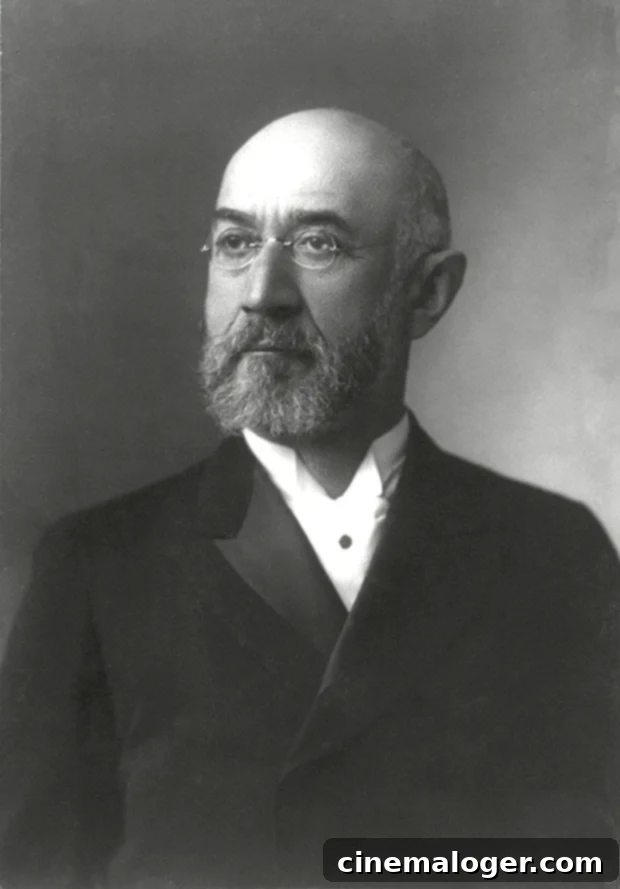OceanGate CEO Stockton Rush’s Titanic Connection: A Tragic Echo Across Generations
The catastrophic loss of the Titan submersible during its expedition to the Titanic wreckage captured global attention, culminating in a somber confirmation of the vessel’s implosion and the death of all five passengers. Among those lost was Stockton Rush, the visionary CEO of OceanGate Expeditions, the company behind the ill-fated deep-sea craft. As the world grappled with the details of this modern tragedy, a remarkable and profoundly poignant historical connection emerged, linking Rush’s own family to the original 1912 disaster of the RMS Titanic itself.
Stockton Rush, a pioneer in civilian deep-sea exploration, was at the helm of the Titan submersible when it vanished on June 18, 2023, while attempting to view the legendary Titanic wreckage resting nearly 13,000 feet beneath the Atlantic Ocean’s surface. What began as an ambitious scientific and tourist endeavor quickly transformed into an intensive, multi-national search and rescue mission that captivated and concerned people worldwide. Days of desperate searching, fraught with dwindling oxygen supply concerns and reports of mysterious “banging sounds,” eventually led to the grim discovery of a debris field. OceanGate released a statement confirming their belief that the vessel and its crew members were lost. The U.S. Coast Guard later corroborated this, offering condolences to the grieving families and announcing that the passengers had likely perished in a “catastrophic implosion” near the bow of the Titanic. “We now believe that our CEO Stockton Rush, Shahzada Dawood and his son Suleman Dawood, Hamish Harding, and Paul-Henri Nargeolet have sadly been lost,” OceanGate’s statement read. “This is a very sad time for the entire explorer community, and for each of the family members of those lost at sea. We respectfully ask that the privacy of these families be respected during this most painful time.”
A Haunting Family Lineage: Wendy Rush and the Straus Descendants
In the wake of this devastating news, an extraordinary revelation brought an even deeper layer of historical irony and tragedy to the fore. It was confirmed that Stockton Rush had an unexpected, profound, and deeply unsettling connection to the original Titanic disaster. His wife, Wendy Rush, is a direct descendant of a prominent couple who tragically lost their lives when the RMS Titanic struck an iceberg and sank in 1912, as reported by The New York Times. Wendy Rush’s great-grandparents, Isidor Straus and Ida Straus, were among the most prominent and wealthy individuals aboard the Titanic’s maiden voyage.
The lineage connecting Wendy Rush to the legendary couple is clear: Wendy’s great-grandfather, Richard Weil, was married to Minnie Straus, who was one of Isidor and Ida’s daughters. This familial tie means that Stockton Rush, who died attempting to revisit the site of the Titanic’s demise, was married to a woman whose ancestors were victims of that very historical event. The revelation underscored the eerie symmetry of the two tragedies, separated by over a century but intrinsically linked by the powerful allure and unforgiving nature of the deep ocean.
Isidor and Ida Straus: A Testament to Enduring Love
Isidor Straus, a co-owner of Macy’s department store, and his beloved wife, Ida, became symbols of unwavering devotion amidst the chaos of the Titanic’s sinking. Their story of loyalty and sacrifice has resonated through history and was famously, albeit fictionally, depicted in James Cameron’s iconic 1997 movie, Titanic. The film portrayed a fictionalized elderly couple embracing in their bed as their cabin filled with water, a scene reportedly loosely based on the documented accounts of Isidor and Ida. Survivors of the 1912 disaster recalled seeing the couple on the ship’s deck, refusing to part ways, as the vessel slowly succumbed to the icy Atlantic waters, according to historical accounts and reports in NYT.

The details of their final moments highlight their profound love and adherence to a strict code of conduct during a crisis. One of Isidor and Ida’s great-grandsons, a descendant whose name has also been associated with the family’s legacy, publicly shared poignant details of the couple’s Titanic experience in a 2017 interview. He recounted that Ida was offered a place on a lifeboat, a chance for escape from the rapidly sinking ship. However, she reportedly changed her mind upon realizing that Isidor was not permitted to follow her. Despite being elderly and a man of considerable wealth and influence, Isidor, a staunch advocate for ethical principles, reportedly refused a lifeboat seat when offered. “My great-grandfather said, ‘No, Until I see that every woman and child on board this ship is in a lifeboat, I will not enter a lifeboat myself,’” Isidor’s great-grandson proudly claimed, reflecting on a profound act of chivalry and selflessness. Ida then chose to stay with her husband, sealing their fate together. Their last reported sighting was of them standing arm-in-arm on the deck, facing their inevitable end with dignity and mutual affection.
The Ill-Fated Titan Expedition: A Modern Exploration Gone Awry
Stockton Rush was not only the CEO of OceanGate Expeditions but also a passionate advocate for advancing deep-sea exploration, believing in the potential for civilian access to the ocean’s most remote depths. The Titan submersible, a cutting-edge but controversial vessel, was designed to take paying customers and researchers on journeys to sites like the Titanic wreckage. Along with Stockton Rush, four other passengers were aboard the submersible that went missing amidst its quest to view the remains of the Titanic underwater. These individuals included British billionaire Hamish Harding, French explorer Paul-Henri Nargeolet, and Pakistani businessman Shahzada Dawood and his 19-year-old son Suleman Dawood, making the incident a truly international tragedy that shocked the world.
The disappearance of the Titan submersible on June 18 initiated an urgent international search operation involving naval assets, research vessels, and aircraft from multiple countries. The timeline of the event was critical, as the submersible’s oxygen supply was estimated to last only until the morning of June 22. This narrow window intensified the rescue efforts, with advanced sonar equipment deployed to detect any signs of the craft or its crew. The world watched with bated breath, hoping for a miracle that ultimately would not come.

The Search and Its Tragic Conclusion
The search operation was one of the most complex in modern history, spanning thousands of square miles of unforgiving ocean. One day prior to the final confirmation, the Department of Homeland Security reported that rescue crews involved in the extensive mission had detected consistent “banging sounds” at 30-minute intervals from the search area. These sounds sparked hope that the submersible might still be intact and its occupants alive, potentially using a system to signal their distress. However, experts cautioned that the source of the sounds was difficult to verify in the vast, noisy ocean environment.
On the afternoon of June 22, the U.S. Coast Guard confirmed the devastating news: a debris field had been discovered in the vicinity of the Titanic wreckage, located approximately 1,600 feet from the bow of the legendary liner. Further analysis revealed that the debris was consistent with a “catastrophic implosion” of the Titan submersible’s pressure chamber. This conclusion meant that the vessel had likely been crushed instantly by the immense pressure of the deep ocean, an event that would have been instantaneous and left no survivors. The depth at which the sub disappeared, around 13,000 feet underwater, meant the pressure was approximately 400 times greater than that at sea level, making survival utterly impossible.
A Legacy of Exploration and a Sobering Reminder
The dual tragedies, separated by more than a century, serve as a profound and sobering reminder of humanity’s enduring fascination with the Titanic and the inherent risks of venturing into the extreme environments of our planet. Stockton Rush, driven by a desire to push the boundaries of human exploration, ultimately met his end at the very site that claimed his wife’s ancestors. This bizarre twist of fate adds a layer of eerie resonance to an already heart-wrenching event, emphasizing the cyclical nature of history and the relentless power of the natural world.
The loss of the Titan submersible and its crew has sparked intense debate about the safety regulations and ethical considerations surrounding private deep-sea expeditions. It highlights the fine line between innovation and recklessness, and the imperative for stringent safety protocols in such high-risk ventures. As the world mourns the five individuals lost, the story of Stockton and Wendy Rush, and the ghostly echo of Isidor and Ida Straus, will forever be intertwined with the enduring, captivating, and sometimes tragic allure of the Titanic.
The legacy of these intertwined stories will undoubtedly influence the future of deep-ocean tourism and exploration, ensuring that the lessons learned from both the 1912 Titanic disaster and the 2023 Titan implosion contribute to safer, more responsible endeavors into the last true frontier on Earth.
